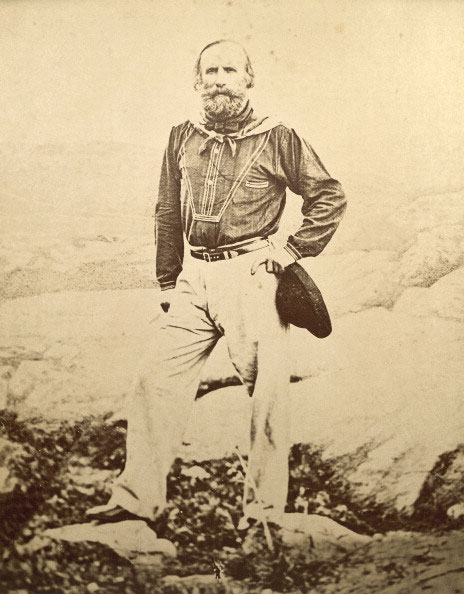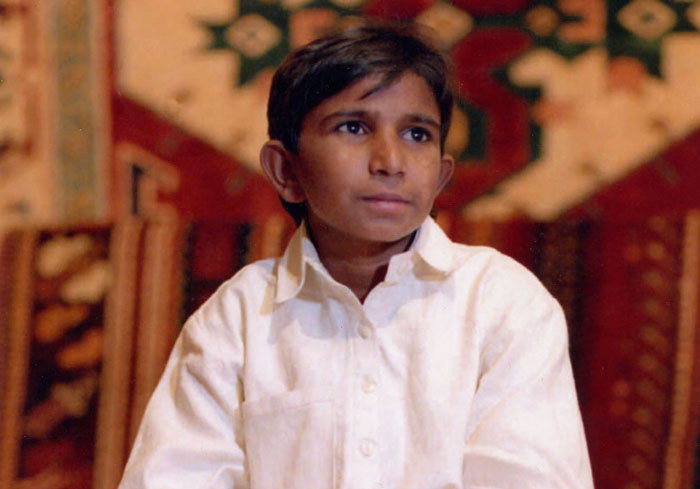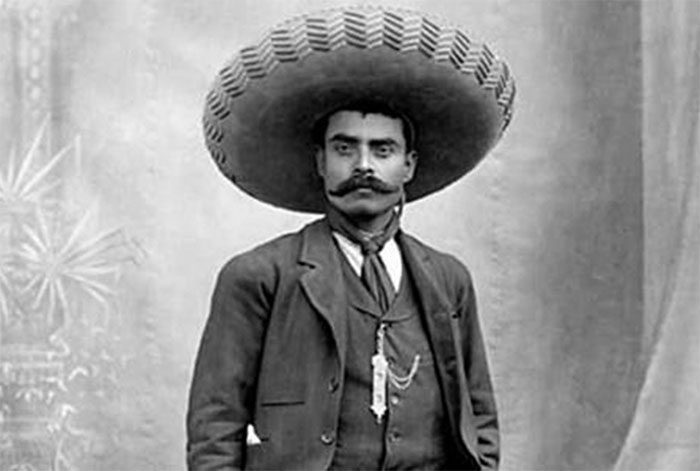Giuseppe Garibaldi:
“The day the peasants will be educated in the truth, tyrants and slaves will be impossible on earth.”
Once upon a time, the country of “Italy” wasn’t a country – simply the name of a stretch of sunny Mediterranean real estate carved up and bickered over by the empires of the day. Italian men from Venice to Naples were conscripted as cannon fodder by their French and Austrian masters, sometimes even pitted against their own cousins. Among their ranks was a young man named Giuseppe Garibaldi, who would change the face of Europe forever.
The son of a fishing family from Nice, Garibaldi had gone to sea at a young age, his travels leading him to cross paths with activists in the Young Italy movement – a coalition of young men campaigning for a free, united, and independent Italy. Giuseppe dedicated himself to the cause and in November of 1883, joined an insurrection effort in a northern province. The rebellion was botched, and the conspirators – including Giuseppe – fled for their lives. With a death sentence waiting for him at home, Garibaldi sailed across the Atlantic and landed in South America… and dead center in about a half-dozen secession wars and democratic revolutions.
While most folks would’ve promptly dashed right back onto their boats, Giuseppe threw himself headlong into the struggles of the dissidents, quickly making a name for himself as a fearless and capable leader. Along with his cadres, Garibaldi would help overthrow the dictator of Uruguay, a truly nasty piece of work who ruled with an iron fist and a private army.
Rather than resting on his laurels, Garibaldi continued to roam the world, networking with democracy activists as his travels took him from New York to Peru to China to England and back to Italy. Turns out the whole “becoming an internationally acclaimed South American freedom fighter” was just Giuseppe’s way of warming up.
On the peninsula, Garibaldi raised an all-volunteer army of students, farmers, artisans, and the kind of scrappy underdogs you don’t see outside of a Star Wars movie. Garibaldi and his “Hunters of the Alps” kicked ass all over Italy, freeing the country one province at a time.
While far from undefeated, Garibaldi gained such acclaim that even Abraham Lincoln would offer to let him lead the Union forces during the American Civil War. Garibaldi turned the offer down, citing that he’d only accept if the goal was to be the abolition of slavery, a move that not even Lincoln was ready to make. Garibaldi would continue to fight, both military and politically, for universal suffrage, the separation of church and state, and rights for women. He died on his beloved farm, overlooking the sea – the first citizen of modern Italy.
Iqbal Masih:
“Today, you are free, and I am free too.”
Born in 1983 Pakistan to the kind of staggering poverty we couldn’t begin to imagine, Iqbal Masih was sold into slavery at the age of four to help pay his family’s debts. Along with other children, Iqbal spent twelve hours a day, every day of the week chained and bound on the cement floor of his lender’s “factory.” Of course, “lender” is a generous word (those I’d use typically can’t get printed) – Iqbal’s boss paid a meager wage of three cents per day, far below the interest of the loan, forcing children like Iqbal into perpetual debt-bondage, a.k.a “slavery-with-extra-steps.” Mistreated and malnourished, Iqbal would only grow to be four feet, but by the end of his short life, he would still stand taller than countless men around him.
After eight years in brutal conditions, Iqbal finally managed to escape from his boss, taking refuge with a local bricklayers’ union. Iqbal led activists back to his sweatshop, helping rescue the children he had worked alongside. Determined that no child should experience what he had gone through, Iqbal began campaigning for the end of child labor, sharing his story across both Pakistan and the world. In the space of months, Iqbal’s work would help free over three thousand child laborers in his country.
Iqbal was assassinated just before his thirteenth birthday, targeted by the so-called “carpet mafia”, sweatshop goons threatened by Iqbal’s work. Too hardcore to let death stand in his way, Iqbal’s example continues to fuel modern abolitionist movements and has led to the liberation of countless sweatshop workers across the globe.
Emiliano Zapata:
“I want to die a slave to principles. Not to men.”
You might not know Zapata, but you know his style. Bandoliers, a sombrero, and a mustache that would make Salvador Dali melt with envy. Even if it’s just been a glimpse of the guy as you’re flipping past the history channel, you’ve probably stopped and thought to yourself “dang – that guy looks pretty cool.”
And you don’t know the half of it.
The man was half Robin Hood and half George Washington with a hefty dose of William Wallace peppered in. Born to a modest family of ranchers in the south of Mexico, Emiliano found himself taking over the farm at the age of sixteen after the passing of his father. In spite of the pressure on him, Emiliano helped the family farm flourish, and even became something of a local legend for his rodeo and horse riding skills. And perhaps – perhaps – “local legend” is all Emiliano would have been. If people had the sense to just let him and his community leave in peace, that is.
But that’s not what happened.
The then-president (really just a pompous autocrat) instituted policies which allowed his cronies to pillage the country with land-grabs. Taxes were levied that forced many peasants into debt-slavery. When Emiliano tried peacefully petitioning the government for better treatment of the people, he was arrested and conscripted into the army (because how could that possibly backfire?)
Zapata spent seven years in the military, finally returning home just in time to be elected the leader of his village. As the dictator’s grasp on power began to slip, Zapata and countless insurgents across the country began to organize a rebellion. In the south, Zapata raised an army of desperate peasants, while his counterpart in the north – the equally legendary Pancho Villa – led brigades of bandits-turned-revolutionaries. Think Simon and Garfunkel – if Paul Simon had been a Zorro-esque insurgent and Art Garfunkel had been a charismatic cattle rustler.
Between the two of them, the old order was ousted and the way was paved for democracy. Until, of course, the new line of politicians proved themselves to be just as slimy and corrupt as their predecessors. Zapata found himself back in the saddle, leading a guerilla war against the president’s goons. Emiliano would continue his battle for the people, only defeated after betrayal and assassination at the hands of a cowardly officer. Even to this day though, Zapata’s legacy lives on in the continued struggles of the people of southern Mexico, naming their struggle for liberty and justice after their heroic ancestor.
Frank Zappa:
“I have four children, and I want them to grow up in a country that has a working First Amendment.”
The year is 1985. In a crowded Senate Commerce Meeting, a mustachioed man in a simple, pristine suit takes a seat at a desk while the crowd around him drones and bustles. Just another speaker at a committee meeting on any other Washington day. Only this isn’t any other Washington day and this isn’t any committee meeting, and that’s not just another speaker. That’s Frank Zappa.
The quintessential iconoclast musician, Zappa dropped out of college to pursue music. His eclectic tastes and passion for genre-busting put Frank on the cutting edge of jazz, rock, pop, and R&B, and both he and his bandmates would see increasing fame and popularity over the 60s, 70s, and into the 80s, where he would have his finest moment.
On September 19th 1985, a special senate hearing was held at the behest of a committee of four wives of influential politicians. Not the elected politicians mind you – their spouses. Somehow managing to waive over two centuries of parliamentary rules, this committee – the infamous “Parents Music Resource Center” or “PMRC” – gathered to discuss a heinous and insidious threat to minds of the nation’s youth: rock music.
Attacking “immoral” artists like Prince, AC/DC, Twisted Sister, and Black Sabbath, the PMRC lobbied the government for legislation, regulation, and censorship of “porn rock” albums. While many in the record industry were quick to appease, Zappa (among others) boldly testified in defense of free speech. In a better world, Zappa’s speech would be mandatory viewing in every civics class. You can actually see the committee members wilt under Zappa’s relentless testimony, and by the four minute mark, he’s already wiped the floor with their arguments.
While the PMRC would succeed in pressuring record companies to adopt parental warning stickers, Frank’s passionate speech helped thwart attempts at more invasive restrictions. Simply put, music as we know it wouldn’t exist without Zappa’s defense of the artist’s freedom to create and consumer’s freedom to enjoy.
Robert Smalls:
“My race needs no special defense, for the past history of them in this country proves them to be the equal of any people anywhere. All they need is an equal chance in the battle of life.”
Born into slavery in 1839, Robert was only twelve years old when he was sent by his master to toil on the docks of Charleston. A naturally talented sailor, Robert quickly learned most everything there was to know about ships and seafaring, even obtaining work as a pilot on local boats and barges. This skill would cause Smalls to be assigned to work onboard a Confederate military transport at the start of the American Civil War – and for those of you who think you know where this is going, be assured you’re not thinking nearly big enough.
On the evening of May 12th, 1862, three confederate officers of the CSS Planter took shore leave, and it was Robert’s chance to strike. With the backing of a handful of other slaves, Robert enacted what might arguably be the single ballsiest gambit of the civil war.
Dressing himself in the captain’s uniform, and donning the same kind of straw hat the captain favored, Robert casually cast off from the dock and began sailing north (presumably leaving the confederate officers to return baffled, screaming “You’re killing me, Smalls!”)
Not only did Robert Smalls abscond with the ship, but four cannons and two hundred pounds of ammunition besides. But that wasn’t enough, because Robert kept making stops along the way to rescue more slaves, including his own wife and family. Still not done being awesome, Smalls navigated through almost half a dozen checkpoints, relying only on memorized hand-signals, the dark of the night, his hasty disguise, and a quiet bravado that would make Rambo look like a wuss.
Smalls promptly delivered the Planter into Union hands and provided invaluable intel about the Confederate defense and joined the Union Navy and Army, fighting in seventeen battles over the course of the war and convincing Lincoln to allow black men to join Union forces. Smalls even got to pilot and captain the very same boat he had used to escape.
He did all this, by the way, when he was turning twenty-three. He would spend the rest of his life opening and running a successful business and becoming a member of congress, representing the very district where he had once been a slave. This very year he managed to get his face onto a critically acclaimed heavy metal album – because if you thought being dead for a hundred and thirty years was going to stop him from being a legend – think again.




























